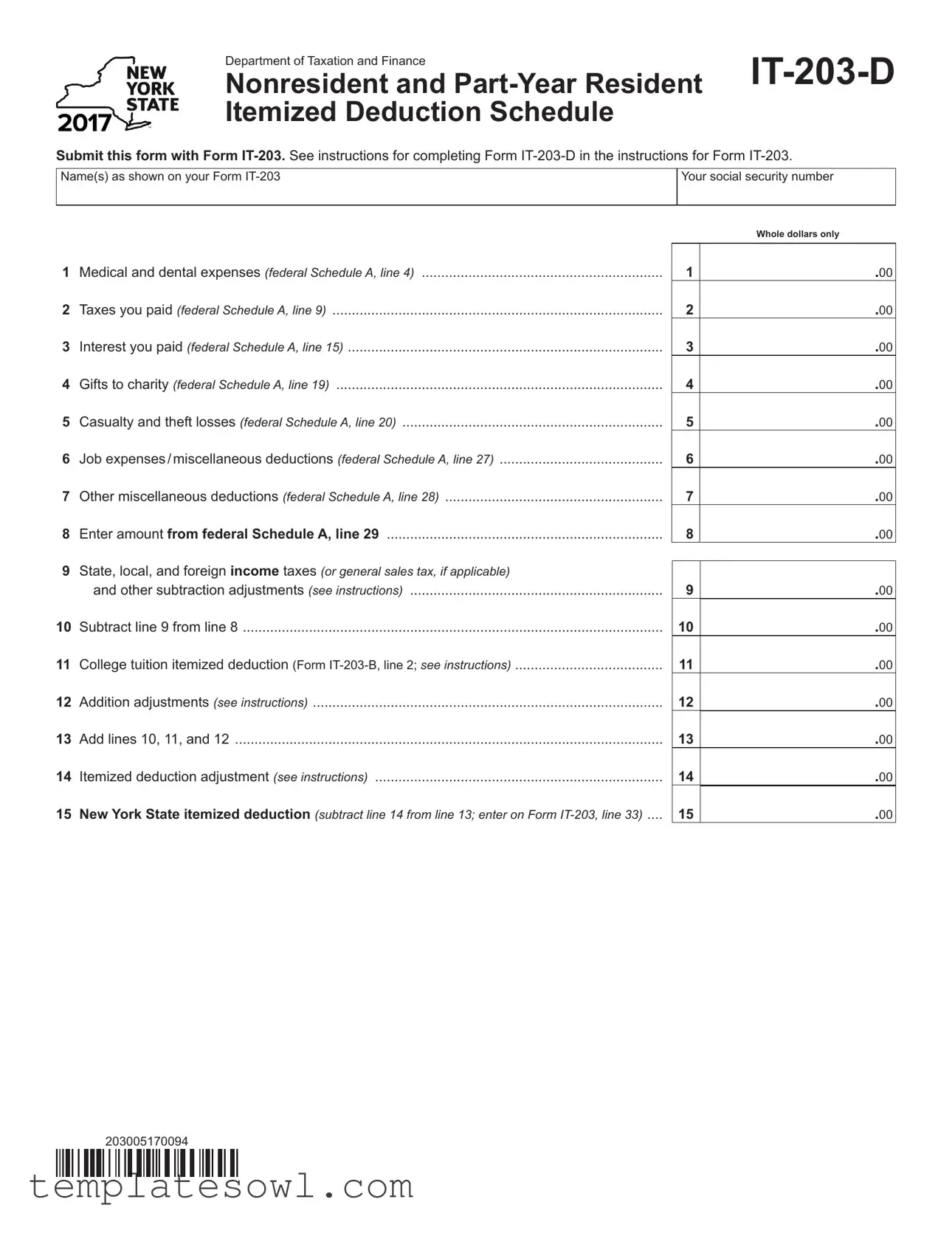Filling out the IT-203D form can be a straightforward process if you know what to look out for. However, several common mistakes can trip you up along the way. Paying attention to these can help ensure that your form is completed accurately and submitted without issues.
One frequent mistake is not including whole dollars only in the amounts listed. The form specifically states to enter "whole dollars only." Many people accidentally include cents, which could lead to confusion or a processing delay. Make sure to round to the nearest dollar if needed.
Another common issue arises from incorrect or missing personal information. Ensure that your name(s) and social security number are entered exactly as they appear on your primary tax form (Form IT-203). Any discrepancies can create problems, including delays in processing or issues with your tax account.
Another area where errors often occur is in the reporting of medical and dental expenses. People sometimes forget to check their federal Schedule A for accuracy or might calculate a different amount than what is actually listed. Always refer back to the Schedule A to confirm that you’ve captured the correct figure.
Submitting the form without being aware of your allowable deductions can lead to misreporting as well. For instance, when you claim taxes you paid or gifts to charity, refer closely to federal Schedule A. A wrong number can lead to an erroneous refund or additional tax liabilities.
Additionally, some filers overlook the instruction notes on the form. Not reviewing all the instructions, particularly regarding line 9, can lead to significant errors. This line involves state, local, and foreign income taxes or sales tax adjustments. It’s crucial to read the specific guidelines for this section carefully to avoid mistakes.
Another mistake is failing to carry forward the adjusted values properly across different lines of the form. For example, ensuring that the state itemized deduction is calculated correctly by subtracting the itemized deduction adjustment from the total of lines 10, 11, and 12 is essential. Miscalculating could affect your overall tax liability.
Lastly, submitting the IT-203D form without confirmation that it is attached to Form IT-203 is a mistake that can sideline your tax filing. Remember to double-check your submission to ensure all required documents are included before sending them off. This comprehensive attention to detail will help you avoid issues down the line.

